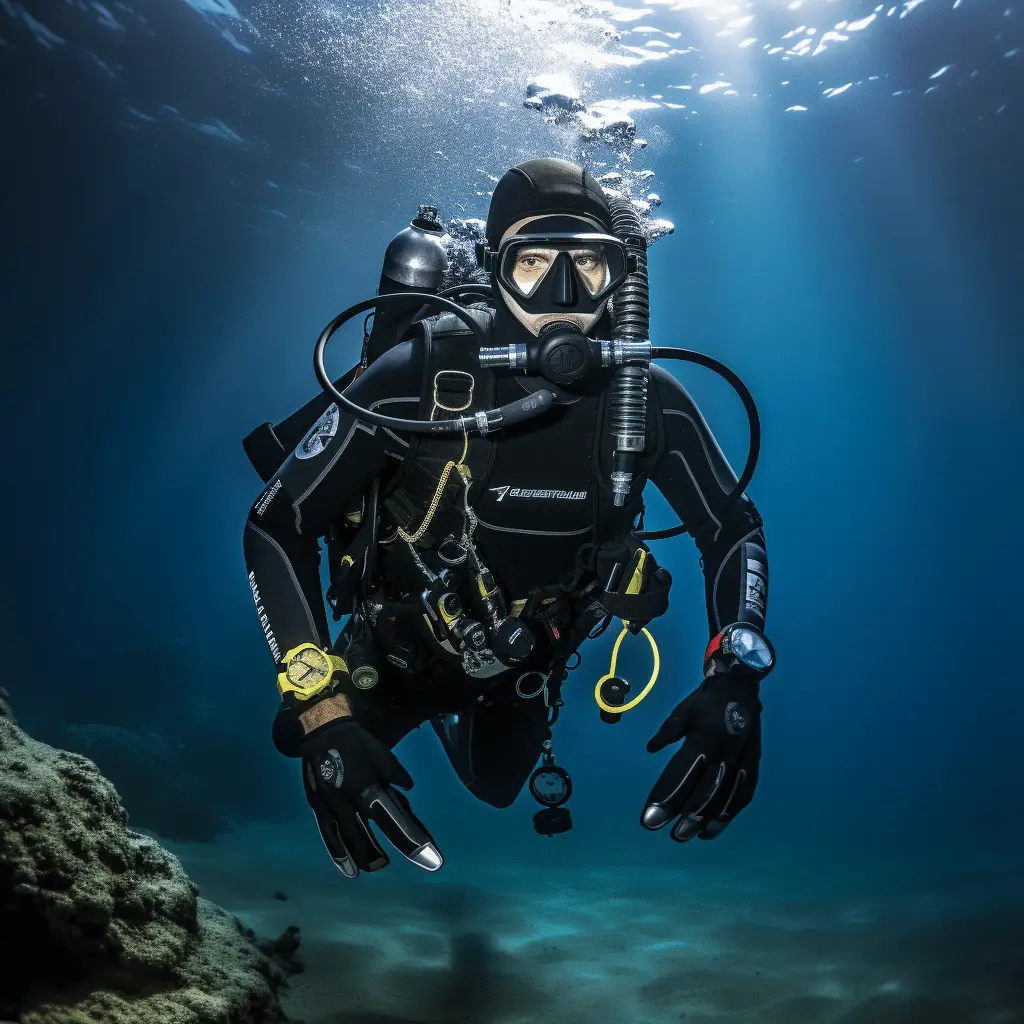Scuba diving is both a recreational sport and a professionally useful activity. The scuba cylinder (also called a scuba tank) is an integral part of scuba diving, and without it, divers simply cannot breathe underwater. They are heavy, weighing around 30 pounds, with more weight added when they are filled. It may be intimidating to think of carrying all that weight while swimming. But why does scuba tank weight differ? And why does it matter?

Why Are Filled Tanks Heavier?
The air around us doesn’t seem to have any weight. You may be compelled to argue that since scuba tanks are filled with air, they shouldn’t weigh more or less according to how full they are. However, it is essential to realize that they are full of compressed air, which means the tank’s volume is carrying much more air than it normally would if the air wasn’t compressed. Air has mass, even if it is negligible, and it adds up when compressed. For example, the standard S80 aluminum scuba tank weighs about 6 pounds more when it is full (5.9 to be exact).
Why does this matter? You’re already carrying 30 pounds; an extra 5 or 6 won’t matter much. However, the difference in weight affects buoyancy, which has a significant impact on scuba diving.
Weight And Buoyancy
Let’s take a (small) physics lesson. At first, we can define weight and buoyancy to understand them better.
Weight is the gravitational pull on an object that is proportional to its mass. Because the force of gravity on earth is fixed, we can use mass and weight interchangeably. Mass is measured in kilograms or pounds. In layman’s terms, weight and mass are the same.
Buoyancy is the upwards force that fluids exert on objects submerged in them. For example, it is the force that water exerts on a scuba tank when the tank is in the water. In layman’s terms, it is a measure of how much an object sinks or floats. An object that is denser than the liquid it is submerged in will sink, whereas an object with less density will float.
According to physics (Archimedes’ principle), an object’s buoyancy is proportional to the weight of the fluid it displaces when submerged. The density of an object determines whether it sinks or floats, depending on which force is greater, gravity or buoyant force. This principle is used by swimmers every day, especially divers because they need to control their buoyancy in water in order to dive deep.
Neutral Buoyancy
Scuba divers carry a device called a BCD to control their buoyancy. In simple terms, they need to be able to float or sink according to the depth they need to be in. If left without a device, humans are buoyant and thus would float to the surface.
Neutral buoyancy refers to equalizing buoyancy to that of your surroundings so that you neither sink nor float. Scuba divers use a BCD to achieve neutral buoyancy by changing their density by inflating or deflating the device.
Scuba Tank Buoyancy And Weight
Because compressed air does not change the volume of a scuba tank, the added weight makes the scuba tank denser. As a diver breathes the air from the tank and empties it, the tank’s density decreases and thus should be more buoyant.
Scuba tanks made of different materials have differing buoyancy. Steel tanks are always negatively buoyant. The increase in density only makes it more buoyant, but it never reaches positive buoyancy. This means they are always going to sink, whether empty or full. On the other hand, aluminium tanks cross from being negatively buoyant when full to becoming positively buoyant when empty.
The weight of the compressed air is enough to make aluminium tanks sink, and as they are relieved of this weight, they slowly start to float. Divers can feel this increase in buoyancy when using aluminium tanks, which is probably one reason aluminium tanks are popular among recreational divers. The empty tanks can be switched for full ones, and they would float to the surface. Someone at the surface of the water can easily see the floating tanks and collect them for refilling later.
Steel tanks weigh a lot less when they are outside of water. It may be surprising at first because steel weighs more than aluminium. However, because aluminium is a lot softer than steel, and the tank walls need to be made thicker to withstand the increased pressure when filled.
In short: Empty steel tanks sink, while empty aluminium tanks float. Divers using aluminium keep this in mind as time passes in their dive, and they begin to float more.
Weight Belts
Deep sea divers also use weight belts to decrease their buoyancy (sink) and shed the weight when they need to increase their buoyancy (float). If a diver is using an aluminium tank, they need to carry more weights on their belt because aluminium tanks are more buoyant.
Steel Vs. Aluminium, Which is Better?
You’re probably confused by all the floating and sinking scuba tanks do and wondering which tank is the better choice. The most popular among recreational divers is aluminium, but each diver has their own preference according to the type of diving they prefer to do. However, they are more susceptible to dents due to the soft nature of the metal. Steel is more durable, but many find it difficult to fight the negative buoyancy and fear they would sink with the tank.
Because steel tanks are lighter on land, using them may not be feasible for divers that need to carry them over large distances before reaching the dive location. The diver must decide which burden they would rather carry: the increased weight on land or the increasing buoyancy in water.

Conclusion
Scuba tanks weigh more when they are full than when they are empty. The added weight when they are full makes them sink more, which can be an important factor in deciding which type of scuba tank is more suitable.
Now we know that scuba tanks weigh more when they are full but have you ever thought “How much does it to fill a scuba tank”? Check our blog post and find it out now.
